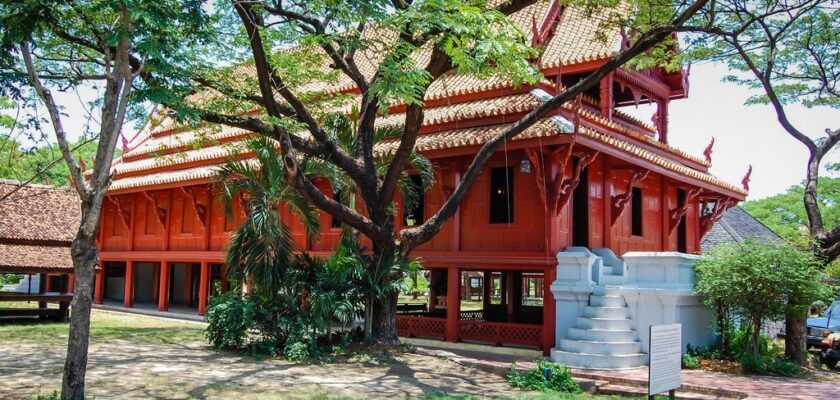Muang Boran Park
Muang Boran Park is one of the world’s largest open-air museums, and translates to “Ancient City”. A wealthy Bangkok resident financed the venture, which cost US$200 million. Over the course of 10 years, the 80-hectare site, which is the shape of Thailand’s territory, has reproduced some life-sized objects as well as some of the most beautiful or historically and culturally significant buildings on a 1:3 scale, including some from which only ruins remain, such as Sisanphetprasat, the royal audience hall in ancient Ayutthaya. The individual attractions, for the most part standing in “their” geographical location, are accessed by roads that can be traveled by car.
. Opening hours:Daily.8.00-17.00Admission is paid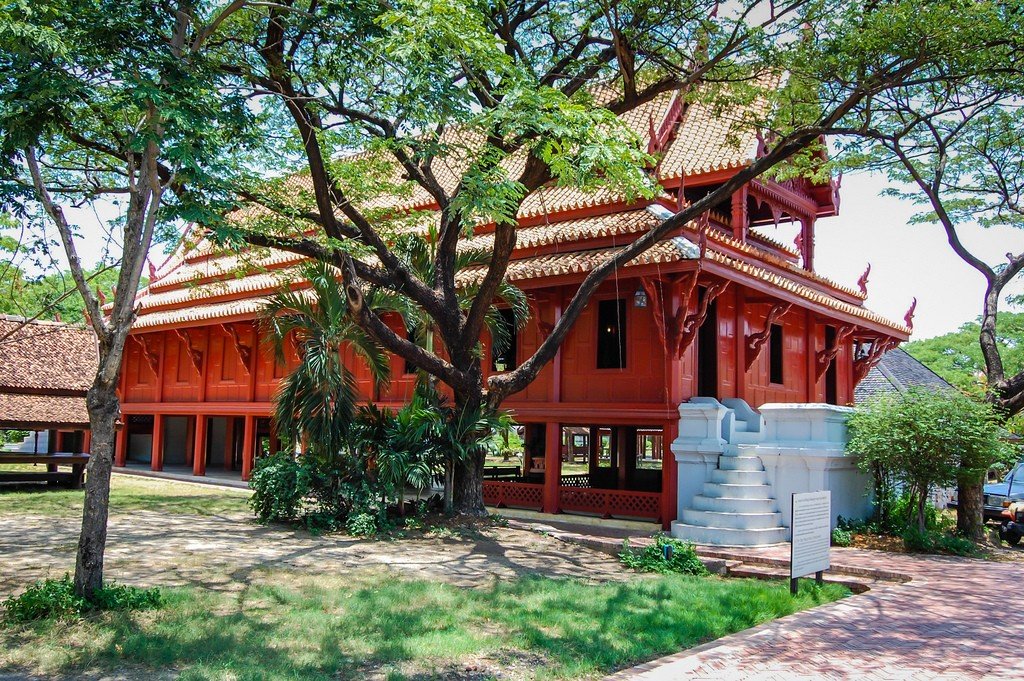
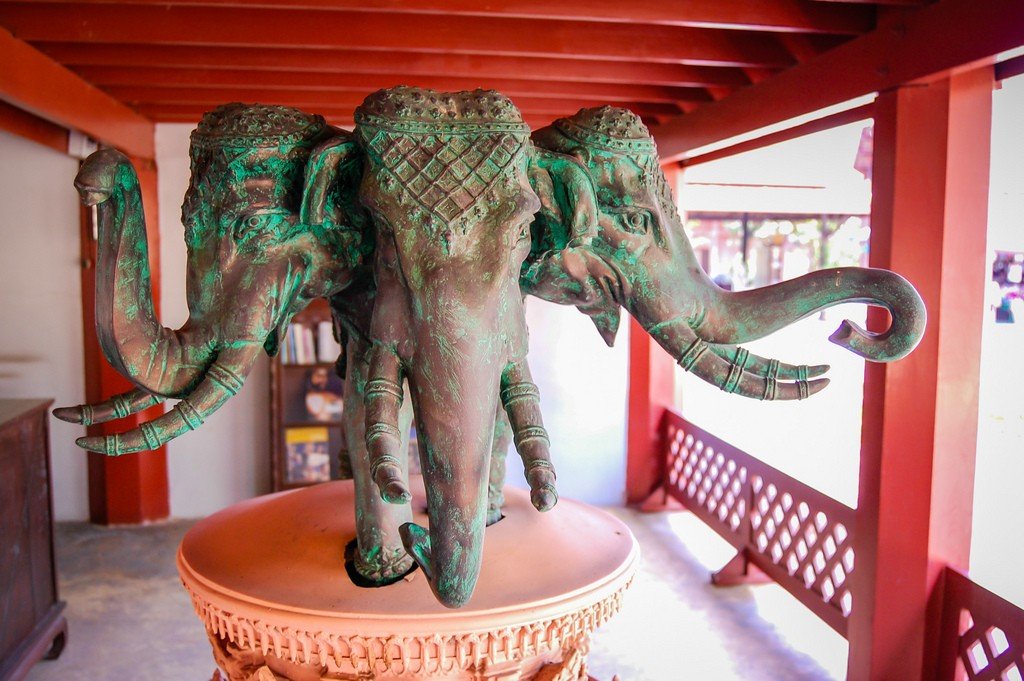
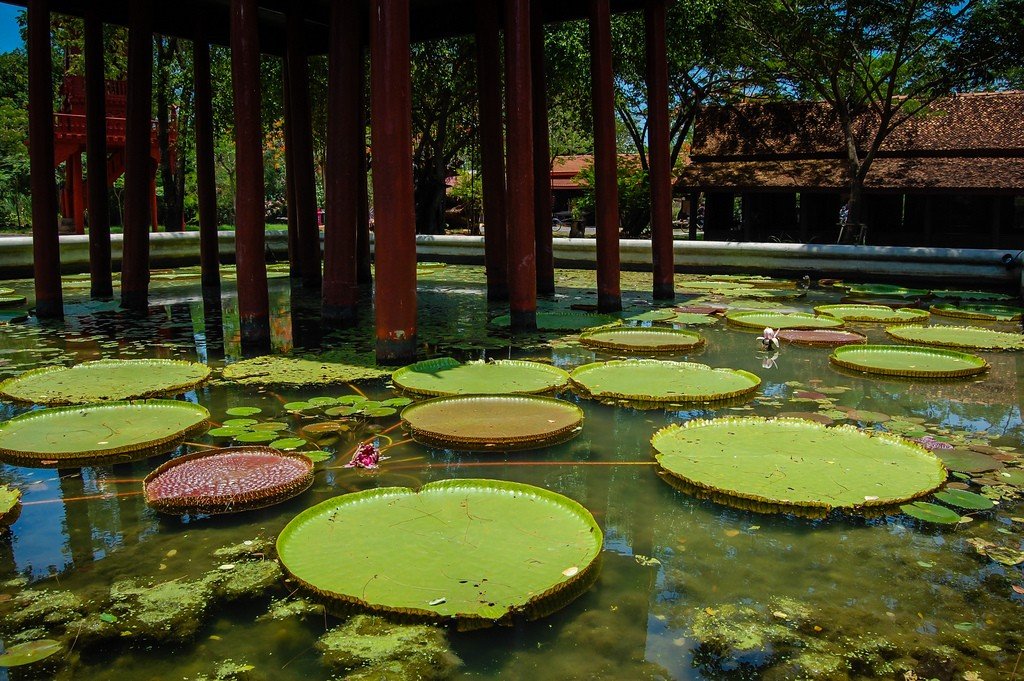
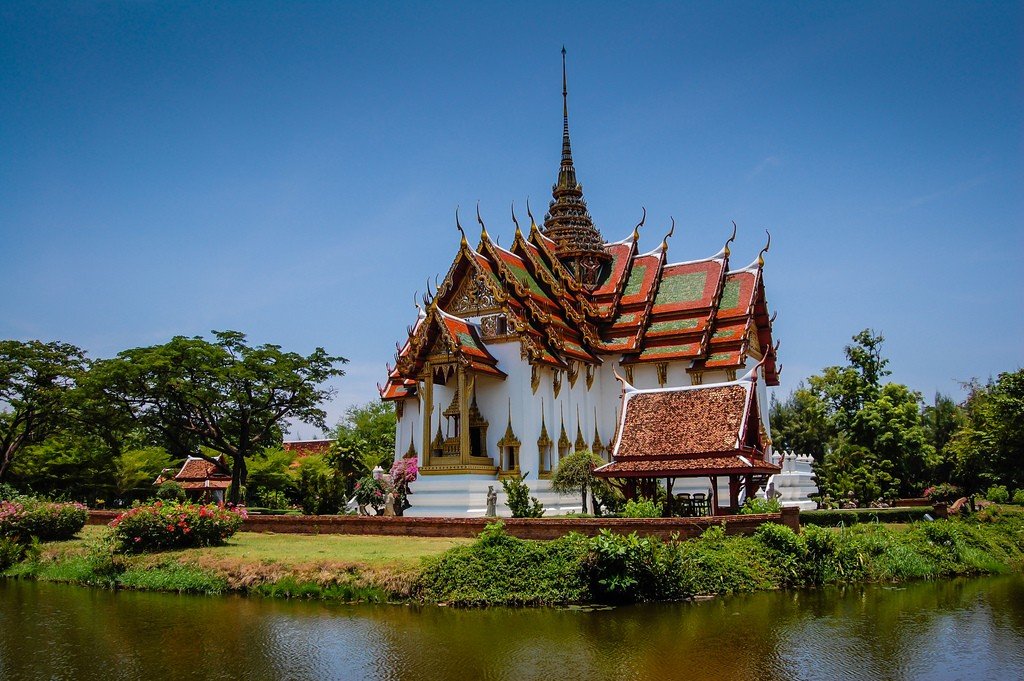
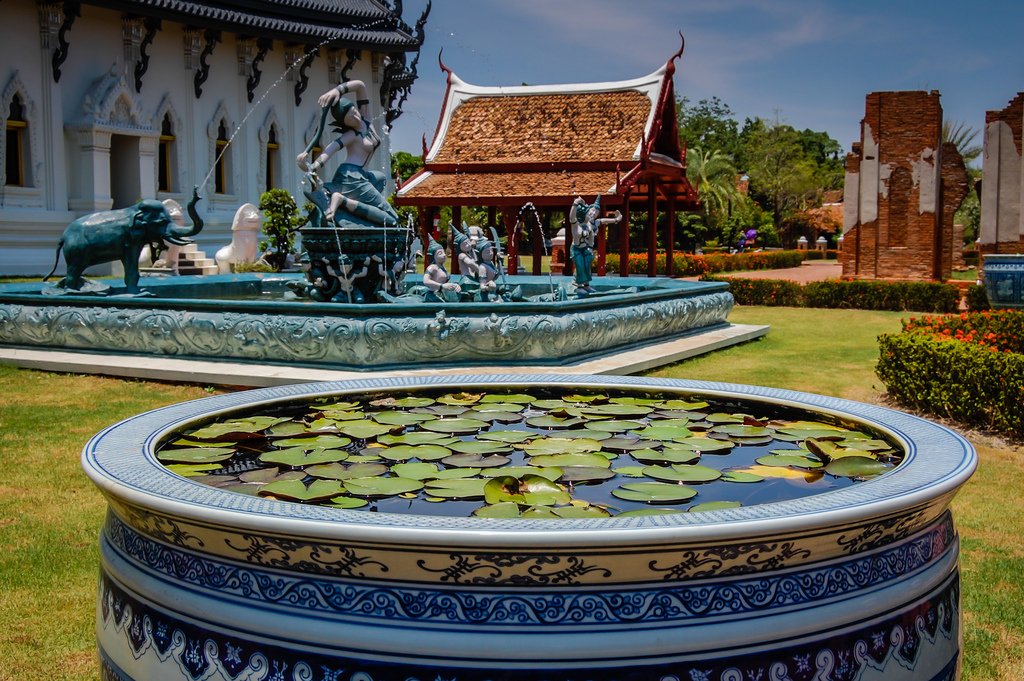
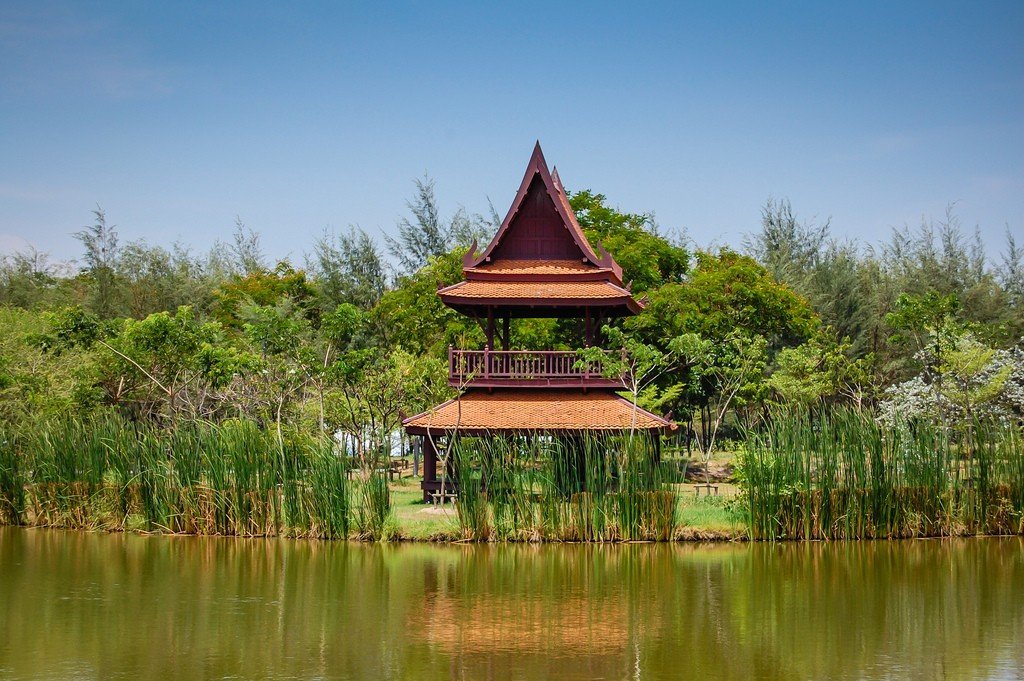
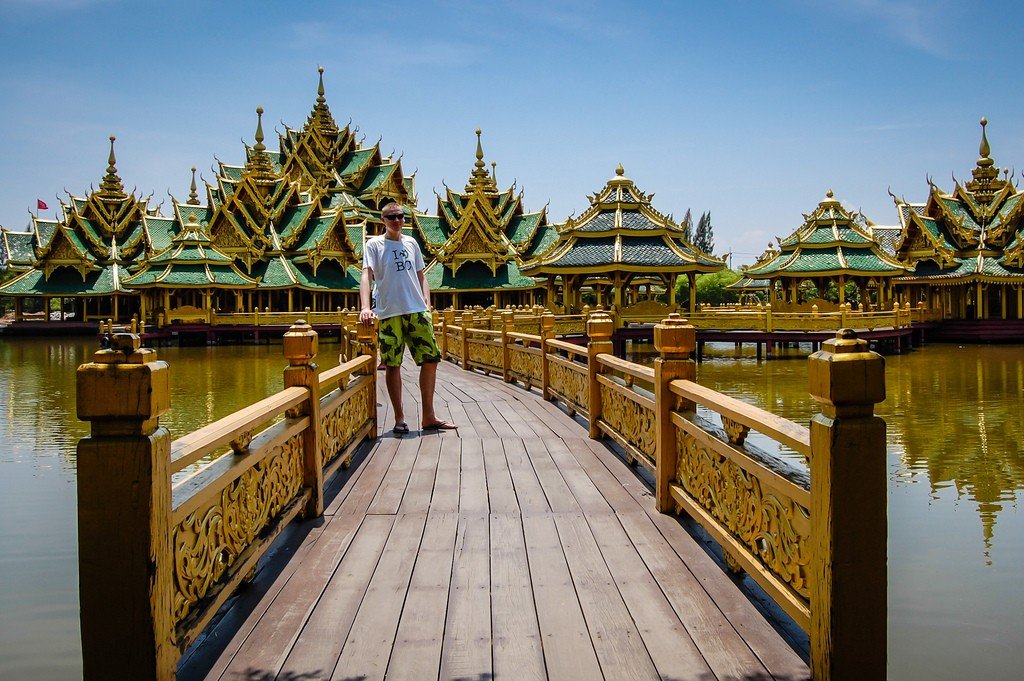
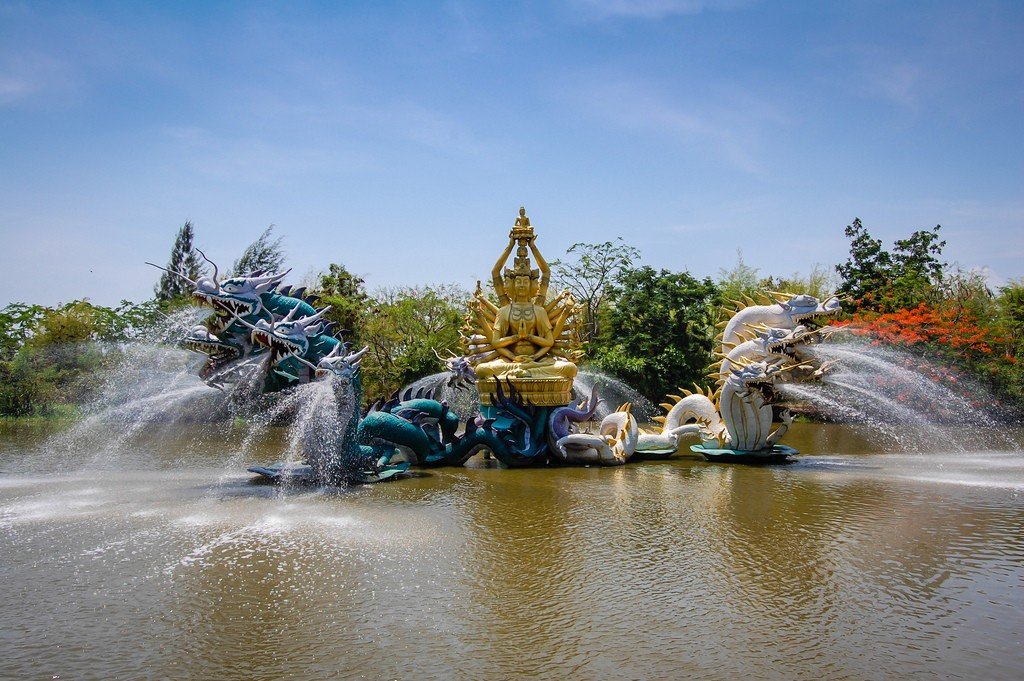
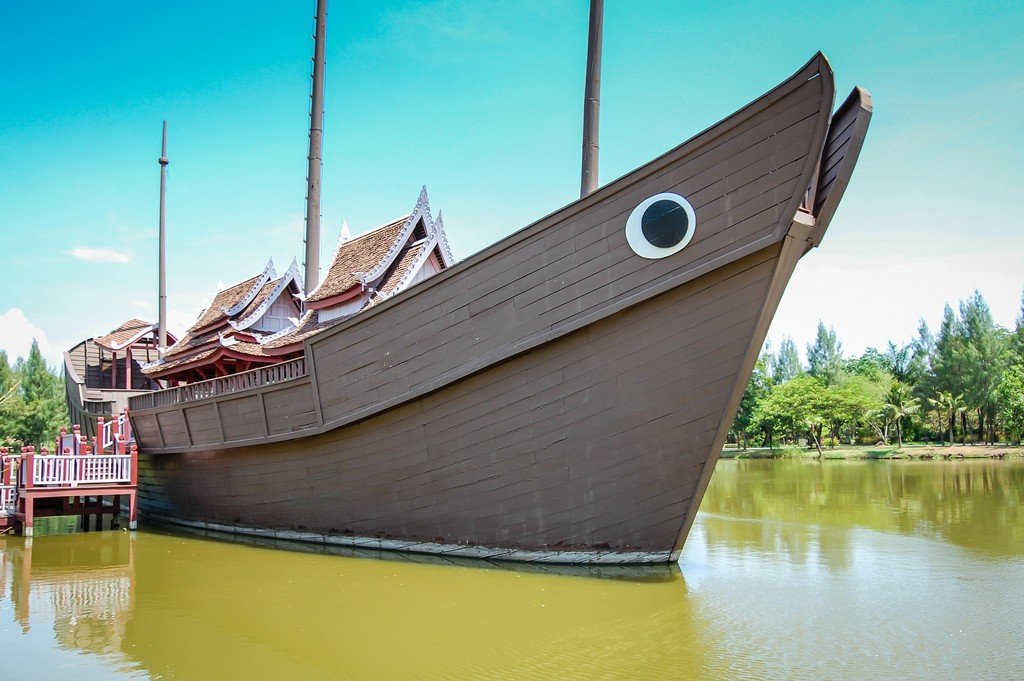
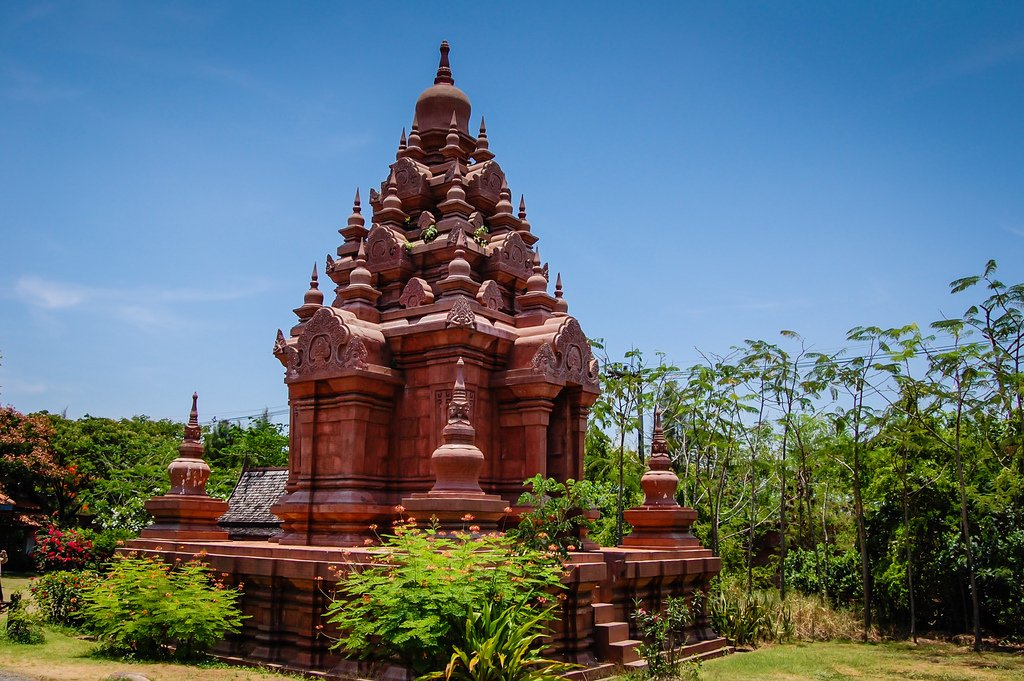
Muang Boran Anthropological Museum
The Anthropological Museum in the northern part of Muang Boran Park contains exhibits of over a thousand years of history from all corners of Thailand. It is housed in a group of Central Thai-style farmhouses. The museum gives an insight into the daily life of the people by exhibiting musical instruments, ceramics, fishing and rice farming tools.
Horkham
A collection of stone and bronze sculpture, ceramics, wood carvings and mother-of-pearl from all of Thailand’s developed cultures are gathered on the top floor of Hokkham – the Gilded Hall. The key exhibit is a carved depiction of seventy episodes from the life of the Buddha. The Hokkham building itself is an exact reconstruction of the former governor’s residence in Lampang, an outstanding work of Thai architecture. The entire structure is made of wood without a single nail.
Among the buildings restored in the Ancient City are, for example, houses that stood along the canals in Bangkok and were demolished in the 1970s due to the construction of streets. There are also temples and palaces whose originals are either now a pile of ruins – the Sanphetprasat Throne Hall in Ayutthaya – or have changed beyond recognition, such as the Dusit Maha Prasat at the Grand Palace in Bangkok. In the Ancient City, they are reduced to a third of their present size, but otherwise reproduced in minute detail. Sanphetprasat is distinguished above all by its high inner halls with magnificent wooden ceilings and gilded walls decorated with mirrored mosaics and stucco. At Dusit Maha Prasat, the exact replicas of the murals will attract attention. They depict state ceremonies, religious festivals, military parades and court life under King Rama I (1782-1809). The carvings and ornaments framing the doors and windows are especially good.
A 54-meter-high mountain depicting the “neutral territory” between Thailand and Cambodia is embanked in the northeast of the complex. There is a good panorama from the mountain. On the mountain stands a replica of Khaw Phra Vihan, a temple where reverent pilgrims, including kings, have flocked for thousands of years. From a small river, you have to climb up four terraces – easier to do in the cooler morning hours – on which lie stone ruins once covered with elaborate Angkor Wat-style pointed roofs. Khau Phra Vihan features an authentic reconstruction of such a roof.
Gardens
There are seven gardens on the grounds – resting places with waterfalls, rocks and tropical flowers – representing the world of Thai mythology. For example, in the Garden of the Gods stands a bronze harness of ten horses on which the Indian moon god Chandra seems to be flying over a waterfall. There is also the Garden of Manora, where a beautiful girl with bird’s feet is depicted surrounded by her sisters. Not far from the entrance is the Brahma stupa and the “royal seat” from where Queen Elizabeth II of England watched the opening ceremony of the complex in February 1972. The elephant enclosure is also interesting. Travelers with children should enter the small menagerie in the beautiful park. Elephants, deer, gibbons and many exotic birds live in open enclosures. Traditional (partly reconstructed) Thai wooden houses stand near the floating market in the Ancient City.
.